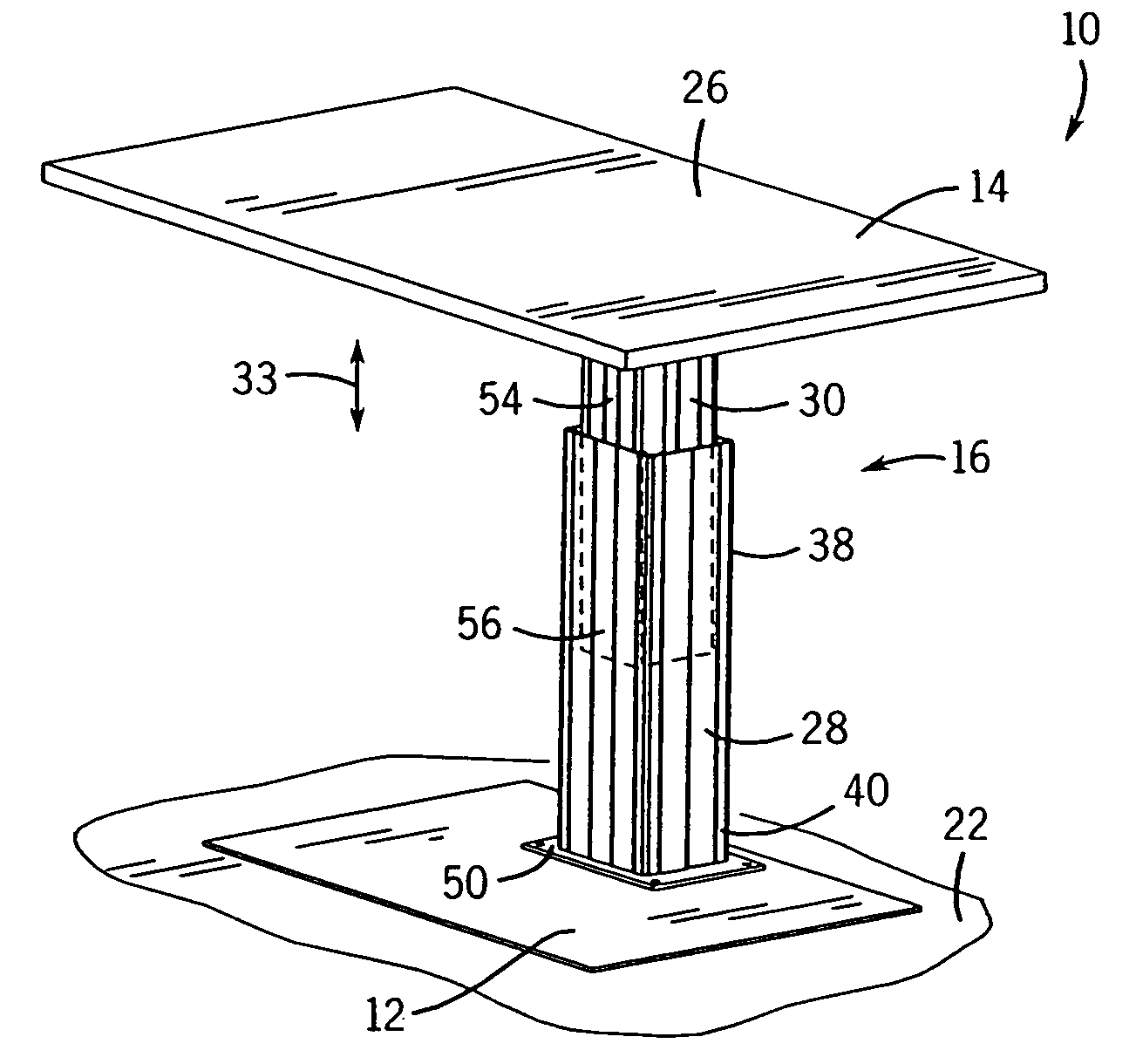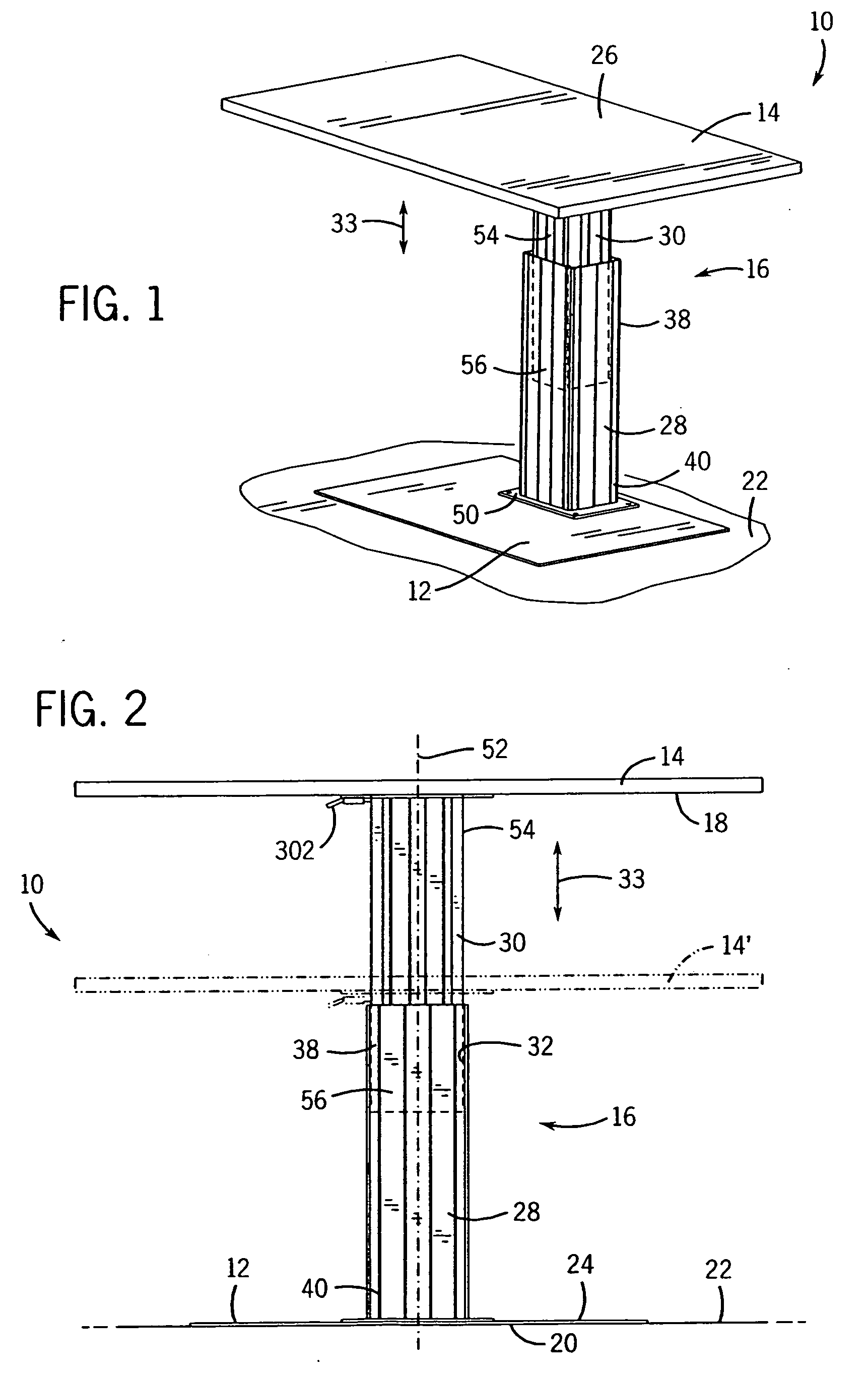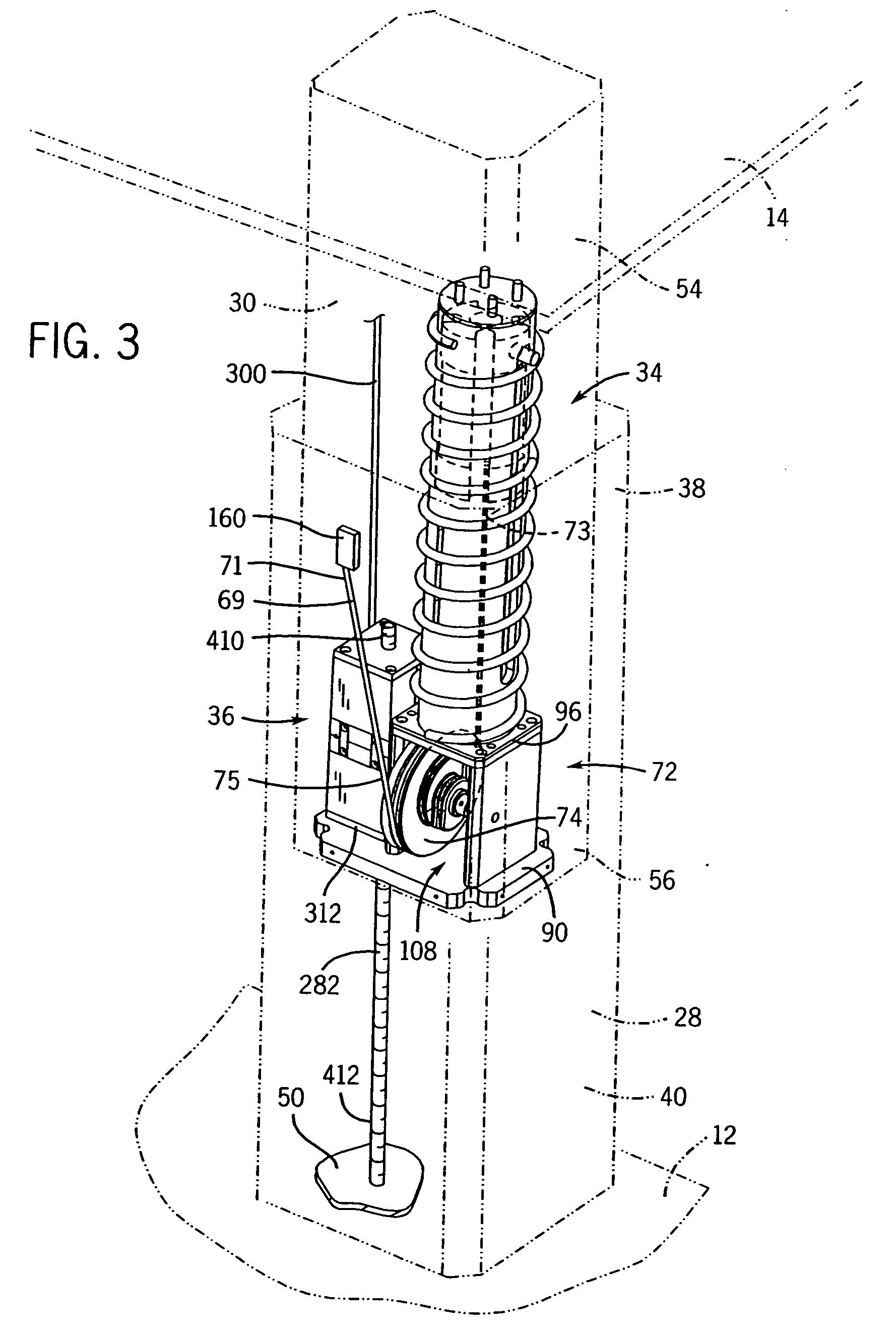Height adjustable table
a height adjustable and table technology, applied in the field of tables, can solve the problems of inability to conveniently adjust the counterbalance force, the solution fails to provide a safety mechanism for preventing the movement of the upper column, and the difficulty of a person raising and lowering in a controlled fashion
- Summary
- Abstract
- Description
- Claims
- Application Information
AI Technical Summary
Benefits of technology
Problems solved by technology
Method used
Image
Examples
Embodiment Construction
[0101] One or more specific embodiments of the present invention are described below. It should be appreciated that, in the development of any such actual implementation, as in any engineering or design project, numerous implementation-specific decisions must be made to achieve the developers' specific goals, such as compliance with system-related and business related constraints, which may vary from one implementation to another. Moreover, it should be appreciated that such a development effort might be complex and time consuming, but would nevertheless be a routine undertaking of design, fabrication, and manufacture for those of ordinary skill having the benefit of this disclosure.
[0102] Referring now to the drawings wherein similar reference numerals correspond to similar elements throughout the several views and, more specifically, referring to FIGS. 1 and 2, at least some aspects of the present invention will be described in the context of an exemplary table assembly 10, inclu...
PUM
 Login to View More
Login to View More Abstract
Description
Claims
Application Information
 Login to View More
Login to View More - R&D
- Intellectual Property
- Life Sciences
- Materials
- Tech Scout
- Unparalleled Data Quality
- Higher Quality Content
- 60% Fewer Hallucinations
Browse by: Latest US Patents, China's latest patents, Technical Efficacy Thesaurus, Application Domain, Technology Topic, Popular Technical Reports.
© 2025 PatSnap. All rights reserved.Legal|Privacy policy|Modern Slavery Act Transparency Statement|Sitemap|About US| Contact US: help@patsnap.com



